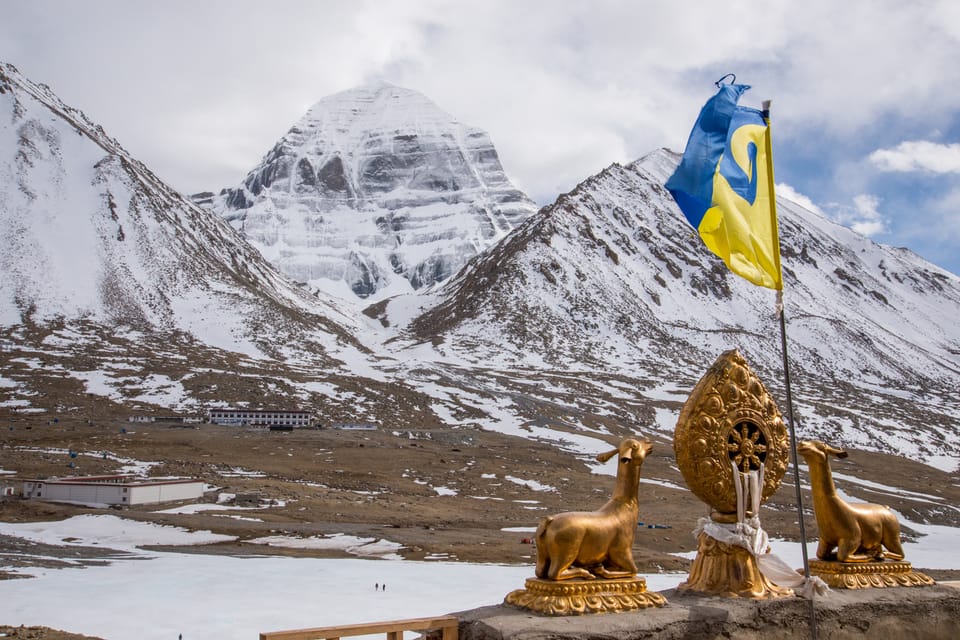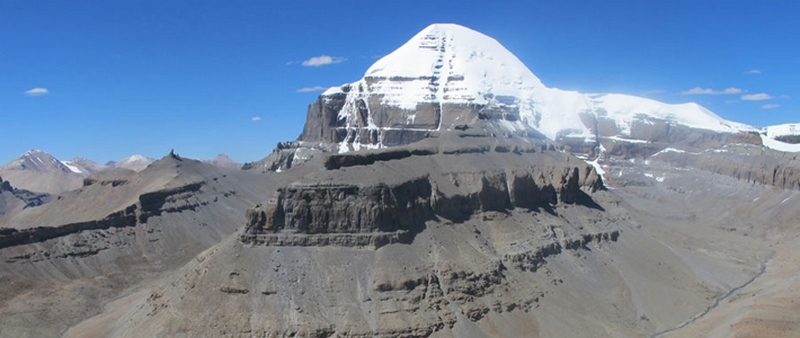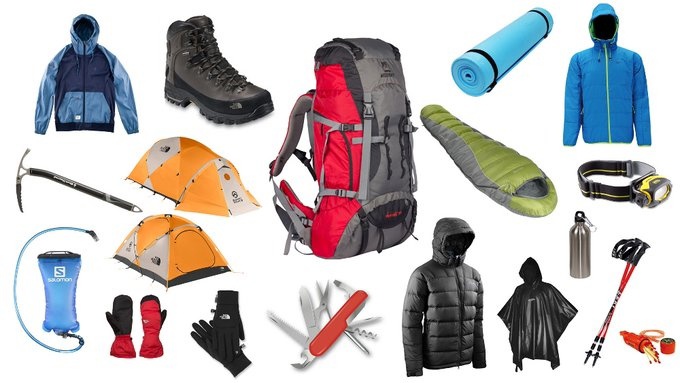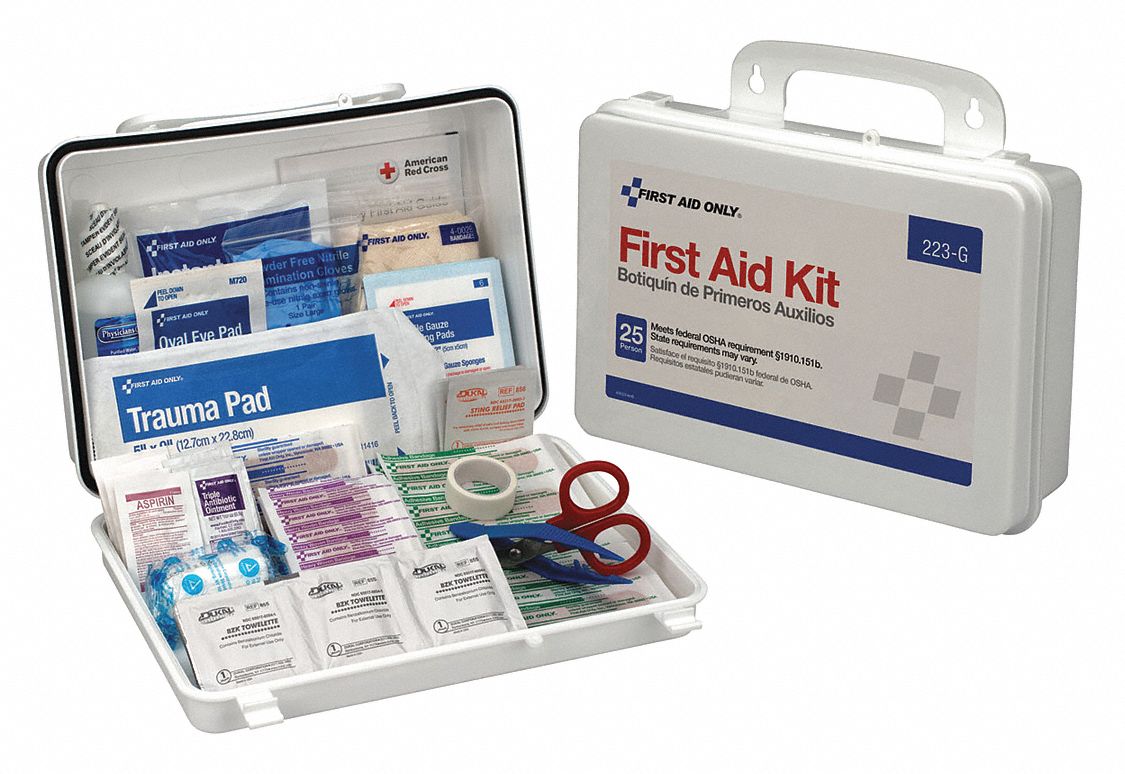Best Time (Season) to Visit Kailash Mansarovar

Best Time (Season) to Visit Kailash Mansarovar
Are you struggling to decide the best time for your Kailash Mansarovar journey? With unpredictable weather, extreme altitudes, and limited accessibility, choosing the right season is crucial for a safe and comfortable pilgrimage.
Many travelers face challenges in finding the ideal time when the conditions are favorable and the yatra is open.
To make your planning easier, this guide will help you understand the best seasons, weather conditions, and essential travel tips for a smooth and fulfilling journey.
The Kailash Mansarovar Yatra is a special spiritual journey that takes travelers through the breathtaking landscapes of Tibet.
The main and important focus of this sacred place centers around Mount Kailash, whose 6,638-meter peak stands as a majestic and sacred point for Hinduism as well as Buddhism, Jainism, and Bon.
Kailash Mansarovar Lake maintains its beautiful reputation as a sacred lake with crystal clear water since it surrounds the holy mountain next to it.
The journey to holy grounds requires a particularly difficult trek of 52 kilometers that spans roughly fourteen days before completion.
The journey to these religious destinations enables walkers, yak riders, and guide-utilizing travelers to make the pilgrimage.
Travelers perform Kora or Parikrama as a spiritual loop around Mount Kailash to gain blessings and fortunate outcomes from this experience.
The selection of the correct travel time/season becomes essential when planning this outstanding trip. Traveling to Tibet during unfavorable weather puts the trek at risk by making conditions dangerous and complicated.
The season of your travel period significantly impacts the course of your expedition.
Your choice of travel season plays a vital role in delivering the complete spiritual along with physical essence of this holy journey.
This blog offers valuable tips whether you are starting your travel or are already experienced because it directs you towards creating remarkable experiences at Mount Kailash.
Following is a season-by-season analysis of the most favorable period for undertaking the Kailash Mansarovar Yatra.
A trip to Mount Kailash and Lake Mansarovar requires considering the right seasonal period because it determines both the security and the quality of the visit.
Weather patterns differ throughout each season, thus affecting your travel journey.
You will see:
Best Time/Season to Visit Kailash Mansarovar Yatra– A Seasonal Guide
1. Summer Season (May to June) – The Best Time to Visit
The months between May and late June are the most suitable time to explore Mount Kailash and Lake Mansarovar.
Why summer is the best season?
Summer stands as the optimal season according to visitors.
Kailash Mansarovar trekking becomes easier because the summer weather maintains temperatures between 5°C to 20°C.
You will find nice weather during this time because snow has not accumulated on the trails, thus making your path safe from snow and ice.
The period between June and October matches perfectly with the holy ritual of Mount Kailash, known as Kailash Parikrama.
What is special about May-June?
Visitors commonly find June to be the most suitable month due to the weather stability that precedes the monsoon onset.
People find this time period especially favorable during their visit.
During this period, thousands of spiritual pilgrims converge to produce an active yet devotional ambience.
Open shops, together with guesthouses and supply stations, stretch across Darchen, and the trekking routes enable easy access to food and necessary supplies.
During summer, you can perform the Mansarovar Kora trek because the weather remains pleasant, and there is full visibility in the skies.
Note: Summer presents the ideal moment to witness the spiritual side and natural magnificence of Kailash Mansarovar. A safe and satisfying journey waits for pilgrims because of pleasant weather conditions and clear skies, which create a memorable Buddhist pilgrimage tradition during this season.
2. Monsoon Season (July to August) – A Rainy Yet Beautiful Time
Traveling to Kailash Mansarovar during July or August will result in rainy conditions, especially through the Nepal border region.
What happens during the monsoon season?
The heavy rain in Nepal transforms this region into an extensive green landscape.
Near the end of July and during August, Nepal experiences rainfall that transforms its roads into dangerous slippery surfaces.
Traveling during this time carries a risk of landslides, whose effects include journey delays.
What is special about monsoon?
Tibet stays dry all year round because it belongs to an arid climate zone.
Travelers can successfully undertake the journey through Tibet because the roads, together with trekking paths, stay accessible throughout the season.
The optimum period to travel in Nepal falls within May to September, while monsoon months maintain their own attractions.
Tourists enjoy beautiful environments across Nepal at this time because of plentiful vegetation.
Travellers who accept minor obstacles in their journey should consider visiting during the monsoon season for a rewarding and spiritual adventure.
Note: Travel to Tibet is safer because it stays free from rain. Travelers will find breathtaking scenery during the monsoon season when exploring Kailash Mansarovar for religious reasons.
Also Read: 15 Mysteries & Facts about Mount Kailash
3. Autumn Season (September to October) – A Peaceful and Scenic Time
Visiting Kailash Mansarovar is most favorable during September and October when the rainfall has concluded.
Why is autumn also the best season?
The autumn period presents outstanding conditions for visiting the Kailash Mansarovar pilgrimage site.
The autumn season in Kailash Mansarovar exhibits weather that lies perfectly in the 5°C to 15°C temperature range, which avoids extreme heat or cold.
Autumn provides clear atmospheric conditions that allow visitors to see the majesty of Mount Kailash along with the surrounding mountain peaks.
The trekking routes remain safe, thanks to their open status, which creates an enjoyable experience for travelers.
What is special about Sep-Oct?
Autumn brings ideal conditions for those seeking a peaceful Kailash Mansarovar pilgrimage.
You will find a peaceful environment during autumn because decreased tourism allows you to maintain your personal pace for both spiritual reflection and prayer throughout the journey.
Breathtaking Himalayan Views in autumn present exceptional visual experiences that make Himalayan mountain views reach their peak level of magnificence.
Autumn brings out the most spectacular mountain views of the Himalayan peaks because of its cool, refreshing temperatures.
Note: Visitors choose September and October to experience Kailash Mansarovar Yatra because the weather is delightful while most people stay away and dramatic landscapes become more remarkable. During this season, you can enjoy both spiritual and natural sights while touring the spiritual journey in quiet and revitalizing conditions.
Also Read: Travel Guide About Mount Kailash Tibet
4. Winter Season (November to April) – The Toughest Time to Travel
Cold and Harsh Weather
Kailash Mansarovar goes through freezing winter conditions, which make night temperatures fall beneath -15°C throughout its November to April season.
All trekking obstacles become severe because of heavy snowfall alongside strong winds and slippery pathways.
Challenges of Visiting in Winter time
Walking through snow-covered paths creates an unsafe condition for travelers.
The thin air and extreme cold increase the chance of altitude sickness.
Most hotels, along with supply stations and numerous shops, shut down operations during this season.
Attendance of medical treatment and emergency response assistance becomes more challenging to reach during these times.
Why is winter not an ideal season to visit?
The uncertain climate conditions create a dangerous situation on the route.
Traveling becomes difficult because available resources are less, and the supply of shelter and food is minimal.
Note: It is advisable to avoid conducting Kailash Mansarovar Yatra during the winter season. Travel within this region becomes dangerous because of its extreme temperatures and harsh environmental elements that are challenging for most people.
Why Kailash Mansarovar Yatra is So Special?

People from various religions recognize Kailash Mansarovar Yatra as a sacred spiritual journey that holds great importance.
Faithful people identify Mount Kailash and Lake Mansarovar as places that provide peace together with spiritual enlightenment and blessings.
Multiple factors exist that make Kailash Mansarovar Yatra stand out as a special religious pilgrimage:
Lord Shiva, together with Goddess Parvati, resides in Mount Kailash, according to Hindu religious beliefs. True devotees who complete the yatra will be freed from the cycle of birth and death, and so they will gain eternal salvation.
Tibetan Buddhists see Mount Kailash as the sacred home of Buddha Demchok, who represents ultimate happiness. Walking around mountains is believed to bring spiritual enlightenment.
Jains consider the holy site to be the place where Rishabhanatha, the first Tirthankara, achieved liberation from rebirth.
The ancient Bon followers of Tibet recognize Mount Kailash as their Swastika Mountain, which leads through a sacred path toward heaven.
Endurance on the Kailash Mansarovar Yatra creates a profound religious transformation that affects all aspects of life.
Also Read: Top 10 Things to Know About Mount Kailash & Mansarovar Lake
The Geography of Kailash Mansarovar

Kailash Mansarovar exists in Tibet within the center of the Himalayan mountain range. Kailash Mansarovar possesses distinctive characteristics and outstanding beauty that sets it apart from other locations.
The central area of this region includes Mount Kailash, which presents itself as a holy peak rising to a height of 6,638 meters. Mount Kailash faces four directions: north, south, east, and west.
The geographical sides of this area display variations since they incorporate different geological structures. Mount Kailash stands out because of its ideal shape and independent position in the vast Tibetan plateau.
Not far from the mountain, about 20 kilometers away, is Lake Mansarovar. Lake Mansarovar exists as a major freshwater reservoir that rests at 4,590 meters above sea level.
Lake Mansarovar takes up a vast area, extending 88 kilometers in circumference and featuring zones where water reaches depths exceeding 90 meters.
Tibet presents surrounding areas containing impressive landscapes along with spectacular Himalayan mountain sceneries that stretch across its background.
When deciding the best time to go on the Kailash Mansarovar Yatra, it's important to think about what works best for you. Here are some things to consider:
Physical Fitness: The Yatra path demands powerful physical attributes, so participants need enough fitness to endure its demanding conditions. Have proper physical fitness regardless of your chosen time to participate in high-altitude trekking.
Weather: People who like temperatures above average will find summer as their ideal travel season for the Kailash Mansarovar Yatra. September stands out as an ideal option, especially if you prefer cooler weather alongside low crowds.
Crowds: The summer peaks of July and August happen to be the busiest times when visiting. A late-season visit will suit those who seek a peaceful experience because there are fewer people traveling during this period.
Altitude: Many pilgrims develop altitude sickness because of the extremely high altitude. A doctor's consultation should be your first step if you experience difficulty with high altitudes before planning any journey.
Note: Always consult local experts and weather reports, as Himalayan weather conditions frequently remain unpredictable. Your health needs to be your main concern in any situation.
The following essentials and practical advice will help you face the Kailash Mansarovar Yatra trip better and better.
Paking Essentials for kailash mansarovar tour

Even in the warmest months, the temperature can drop, especially at night. So be ready for sudden weather changes.
Clothing: Your clothing items should include thermal innerwear combined with fleece jackets and waterproof jackets together with trekking pants and gloves as well as woolen hats and scarves. Prepare multiple pairs of socks, along with either woolen or thermal type. For summer season visitors, you can bring light daily clothing with you.
Footwear: Wear strong trekking shoes combined with strong waterproof shoes, which should be combined with comfortable sandals or slippers for relaxing at the camp.
Accessories: Bring sunglasses, a sun hat, and a sturdy water bottle. As protection against rain, you should get a waterproof cover for your backpack.
First Aid & Medicines: Carry a first-aid kit with band-aids, antiseptic cream, and pain relief tablets. Take along necessary medications for altitude sickness prevention as well as fever-related symptoms and stomach and cold discomforts.
Skin Protection: Protection of your skin requires items such as high SPF sunscreen along with lip balm and cold cream to defend yourself against strong UV rays and cold winds.
Miscellaneous Items: Assemble your backpack with nutritious food snacks together with a flashlight and batteries along with power charging equipment for your electronic devices and supplement your packing with roll paper and sanitation wipes.
Health and Safety Tips (Based on the Season)

Hydration: Hydration is essential, especially when reaching altitudes because your body dehydrates speedily in these high elevations.
Weather Awareness: Obtain frequent updates about weather forecasts because sudden weather changes demand preparedness.
Consult with a doctor: Before undertaking the Yatra, make sure you have excellent physical health. Getting medical approval from your doctor is necessary before you organize your journey if you have present health concerns.
Acclimatization: The process of adjustment to altitude must be gradual because you should not push yourself through the trip too quickly. Acclimatizing to high altitudes becomes easier with gradual treatment of the body.
Understanding Attitude Sickness and How to Handle It?
Travelers visiting Kailash Mansarovar encounter Acute Mountain Sickness, locally known as Altitude sickness, during their very high-altitude traversals.
A decreased amount of oxygen exists at higher elevations, which causes this condition to develop.
People with altitude sickness might experience headache symptoms in addition to nausea and dizziness, along with tiredness and difficulties in breathing.
There are several effective steps to handle altitude sickness:
A slow approach to climbing will provide your body enough time to adjust to lower oxygen levels.
Drink plenty of water combined with nutritious food choices. The symptoms get worse from alcohol consumption; thus, avoid drinking.
Nonetheless, some people take Acetazolamide (Diamox) to stop their bodies from developing AMS. Consult your doctor for approval regarding medication use.
Take rest periods and stay at the current elevation when symptoms of altitude sickness become evident. Book an appointment with a doctor while descending to a lower altitude when AMS symptom improvement fails to happen or symptoms worsen.
Your health, together with your safety, takes precedence. You should always pay attention to your body signals and never overwork yourself. Consult medical professionals immediately whenever you doubt the nature of your symptoms.
Also Read: Cost and Budgeting for The Kailash Mansarovar Yatra
What are the Special Years and Dates for Kailash Mansarovar Yatra?
If you’re looking for a special time for your pilgrimage, some years and dates are considered extra important.
The Tibetan tradition considers Horse Year and Goat Year to be exceptionally fortunate periods for performing travel to Kailash Mansarovar.
Horse Year: This happens every 12 years, and the next one will be in 2026. The year reportedly grants extra spiritual merits to all individuals who make a journey to Mount Kailash.
Goat Year: People will encounter the Goat Year for the second time in 2027. People consider the Kailash Kora pilgrimage around the mountain at this moment the most favorable time to perform it. Apart from being beneficial spiritually, the years that start with a Horse or a Goat are regarded as particularly powerful for spiritual growth; however, any journey to Kailash remains sacred and valuable.
The Full Moon Period: This has significant importance for many pilgrims who do Mount Kailash because they believe their spiritual journey will become stronger during this time.
The Saga Dawa Festival: It holds great significance to pilgrims since it occurs on the 15th of April in Tibetan lunar months (month of May to July). During this festival, the birth, enlightenment, and death of Sakyamuni Buddha are celebrated.
Pilgrims who come at this period can experience religious ceremonies together with the energetic regional culture. Our present moment gives you the chance to encounter pilgrims who come from different worldwide locations.
Choosing the Right Time for Your Kailash Yatra
If you are deciding when to travel on Kailash Mansarovar yatra, you need to consider three key factors, including weather conditions and crowd levels, alongside personal comfort expectations.
Trekkers should consider visiting Kailash Mansarovar from May to October because the weather conditions are ideal, the number of visitors is high, and the supply of resources is greater.
Your journey to create spiritual moments will be optimal during the Horse Year followed by the Goat Year and the Saga Dawa Festival times.
Conclusion
People typically select the timespan between May and October as the best period to visit Kailash Mansarovar. Your choice between summer action and autumn peace, combined with proper planning, will enhance your visit to Kailash Mansarovar.
The Mount Kailash journey involves more than walking to the summit. Going to Kailash Mansarovar enables you to undergo a profound spiritual transformation while examining your own inner self and developing connections with transcendent forces.
Your journey to Kailash Mansarovar becomes more powerful when you select an optimal travel time.
Thank You for Reading!



